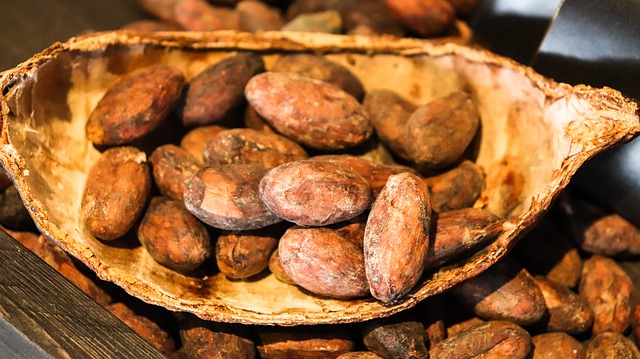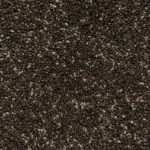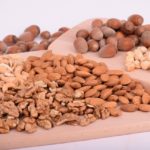Chocolate is now comparable to fine wine and coffee in that connoisseurs are searching for the best and most flavorful chocolate in the world. That leads them on a search around the globe to fine the country that makes the best chocolate. This trip will lead them from the hills of Switzerland, to the fields of the Dominican Republic.
Like wine and coffee, the temperature and growing climate effects the quality of the chocolate that is produced. A bar of chocolate that is made from beans grown in Ecuador and then processed in Switzerland will taste different than Italian chocolate made from beans grown in West Africa.
This article isn’t designed to go over the many health benefits of chocolate (link to article). What it is designed for is a comprehensive list of the best chocolate producing countries in the world.
Beans VS Chocolate: Different Countries Handle Each
The first distinction you need to be aware of if you’re new to the chocolate world is the difference between beans and chocolate. When someone talks about Honduran chocolate, they are referring to chocolate made from beans that were grown in Honduras. Likewise, when you hear someone mention Swiss chocolate, it means chocolate made in Switzerland, from beans grown elsewhere.
As a rule, beans and chocolate are two separate entities. The beans are the raw product and the chocolate is the finished product that you will eat are two separate things. Beans are grown and then sent to a production facility. It is different than coffee production where you will normally be dealing with a single source.
So, it’s important to understand what country the chocolate beans come from as well as where the final product is made. The resulting chocolate (milk chocolate, dark chocolate) is made with sugars and milk. This is the decision of the chocolatiers in the country that will make the finished product. Typically, these countries are: Switzerland, Italy, Germany, Belgium, and the USA.
The roasting process is important because it helps to get rid of that raw, sour taste (some people refer to it as a vinegary flavor) that is a result of the fermentation process. Roasting brings out the typical flavor associated with chocolate. (The roasting process also helps to get rid of any nasty bacteria that might be hanging around).
The other thing that roasting does is make it easier to remove the husk. This is the outer lay of the coco bean that needs to be removed before further processing. When the bean is dried out, the husk turns into a flaky, dried texture that easily falls off with handling. This process is called winnowing. In traditional methods it was done manually, and in some regions it still is using baskets and fans. There are also winnowing machines that agitate the beans and shake off the husks.
The last step is to grind the bean pods up and then conche them. The grinding is going to turn them into a mass that can be used to later make chocolate bars. The concheing can be thought of as a refinement step. It makes sure that the chocolate is super smooth. This is a more modern step and, while not necessary, it does help to create a very smooth chocolate bar.
This product is then mixed with milk and sugar (these are the base ingredients) to make a chocolate bar. Depending on how much sugar and milk is added, you’ll end up with milk chocolate, bittersweet chocolate, or dark chocolate.
Does Chocolate Have Pesticides?
Unfortunately, yes. Many countries still use pesticides when growing cacao beans. The pods grow like any other crop, and rural farmers will spray them with poisons chemicals in order to try and protect them. In fact, most of the world’s chocolate comes from areas where this is a standard practice. West Africa dominates the worlds production of chocolate.
In West African countries, such as Ghana and Cameroon, the farmers spray pesticides on their crops. In many instances the local governments supply this as cacao beans are one of the major exports. So, these governments are protecting their national industry.
There are some countries that produce organic cacao beans, but it’s not that common. The Dominican Republic has been one country that has stepped up to the plate and has shown a good record of growing organic crops. Other countries that have followed course with the organic movement include Peru and other central American countries (Mexico and Ecuador as well).
The takeaway is if you’re looking to get healthy chocolate, make sure it’s labeled organic. If not, then opt for chocolate made from beans grown in South or Central America.
*Supporting articles linked below
What Is Free Trade Chocolate: The Slavery Problem
Much like diamonds, there is a problem with slavery when it comes to cacao bean production. Blood diamonds received much attention, but the issue of slavery and chocolate is as much of an issue. One of the reasons that it doesn’t get as much attention is that cacao is such a worldwide consumable. While not everyone can afford a diamond, most everyone in the world can afford chocolate. It’s sold in supermarkets, candy stores, everywhere.
It’s one of the most sought-after commodities in the world along with coffee and sugar.
The main issue with slavery and chocolate has to do with cacao beans that come from Africa, specially the Ivory Coast. There are many NGO’s dedicated to trying to eliminate the problem of child labor, which is tantamount to forced labor in many aspects. The problem is that the production of cacao is so lucrative for the owners of the companies, and the rule of law in the Ivory Coast is not on par with other African nations.
In many investigate studies (a number of which came to light in the early 2000s) it was found that enslaved child labor from Mali was in use in the Ivory Coast. The children were working on farms and were not being paid a fare wage or, in many cases, a wage at all. They were kept working under threat of violence.
While it’s certainly a depressing subject, there have been strides in abolishing the problem. First, more attention has been brought to the plight of these individuals who are in a forced labor situation. Secondly, many countries have become more proactive in safeguarding against forced labor.
Also, as more people have become aware of these problems, larger companies have taken to cutting ties with suppliers out of the Ivory Coast. They understand it’s a publicity nightmare to be associated with slave produced chocolate, so they opt for countries where it’s not an issue (Dominican Republic, Ghana, Ecuador, Indonesia).
Where Does the Best Chocolate Come From?

This section is going to cover two different aspects of the chocolate making process. First, we will cover the counties where the best cacao beans are grown. Next, we’ll take a look at the countries where you will find the best chocolate. These counties turn the raw product and craft the delicious chocolate that you’re used to eating.
The Countries That Make the Best Chocolate
Here is a list of the best chocolate making countries, in no particular order.
- France
- Belgium
- Germany
- Italy
- United States
Some of the brands that you should check out include:
Lindt: Swiss chocolate
Bonnat: France. They were one of the original chocolate companies to produce single origin chocolate.
Mast Brothers: USA – Brooklyn based, one of the best examples of high quality bean to bar chocolate.
Varlhone: French. They make some of the worlds best chocolate that is used by pastry chefs and restaurants all over the world. Their chocolate comes from single source origins. Often in the Caribbean.
Perugina: Italy. They make delicious Italian chocolates such as Baci.
Endangered Species: USA. They make Fair Trade and ethically produced chocolate.
These Countries Make the Best Cacao Beans
Technically cacao beans (the pods that are used to make chocolate) can only be made in certain regions. It’s an area known as the cocoa belt. This is a region a bit north and south of the equator (the invisible belt that runs the circumference of the globe). The climate is ideal: warm, the perfect amount of humidity, as well as enough rainfall.
That said, it’s understandable that all of the countries that grow cacao beans are warm countries. Interestingly, the countries that make chocolate tend to be in cooler climates.
Here’s a review of the main countries to grow cacao beans.
- Dominican Republic
The DR (as anyone from the Dominican Republic is likely to refer to it) makes some of the best chocolate in the world. You don’t have to worry about child slavery like you do with Ivory Coast chocolate. Not only that, but the temperature in the DR is perfect for growing cacao beans. Also, unlike some other Caribbean or South American countries, the DR doesn’t have a problem with disease and rot like places like Ecuador. So, even though the farmers in the Dominican Republic aren’t as well trained, they have a wonderful environment.
Not only that, but the government of the Dominican Republic is on board with supporting organic and healthy chocolate growth. The island and it’s ideal temperature drew giants in the chocolate business such as Valrhona to come and set up connections with the local farmers.
- Madagascar
This country is well known for making some of the best vanilla in the world. So, it’s fitting that it should also make some wonderful chocolate. Chocolate companies such as Guittard have been drawn to Madagascar because of the unique climate of the Sambirano Valley. It has a very unique flavor, and it’s mainly used in very small batch, high end craft chocolatiers.
- Guatemala
This country is often written about as the originally birthplace of chocolate. The ancient civilizations (Aztecs and Mayans) used to drink chocolate (as opposed to making chocolate bars). They would usually make it spicy, which involved adding chilis and other ingredients.
Organic Cocoa Powder: Raw Cocoa and It’s Powerful Health Benefits
Whenever you buy chocolate, think about three things: Ethical Production, Health Befits, and Taste.
Ethical chocolate, luckily, is pretty easy to source. As long as you steer clear of some of the large scale, mass produced chocolate, and stick to single source chocolate or some of the more luxury chocolate brands, you are going to be getting slave free chocolate.
The tricky balance is when you start to think about the health benefits of chocolate. The healthiest chocolate, honestly won’t taste that good. That’s because sugar isn’t healthy, and therefore, the healthiest form of chocolate is going to be raw, 100% cocoa. The higher the percentage, the less sugar.
If you are looking to find a nice middle ground, a dark chocolate that is 85% to 90% is great. Once you cross over to the 95%-100%, you are basically eating this simply for health benefits.
That’s why it’s a good idea to mix a pure, raw chocolate with something that is more palatable. For instance, you might mix cocoa powder with raw honey in a smoothie. Or you could add it to oatmeal.
Here are some options to consider.
Supporting Articles
Chocolate and Pesticides
- https://www.dw.com/en/in-ghana-farmers-try-to-boost-ailing-cocoa-production/a-47372825
- https://www.ncbi.nlm.nih.gov/pmc/articles/PMC4949184/
- https://www.ajol.info/index.php/wajae/article/view/121893
Chocolate and Slavery
Related Posts

Hi Everyone!
Jenny O’Brien here. Nutritionist & personal trainer. Just your average vegetarian and smoothie fanatic!
If you have any questions, or you’d like me to cover a particular topic, drop me a line and let me know!
Thanks!






